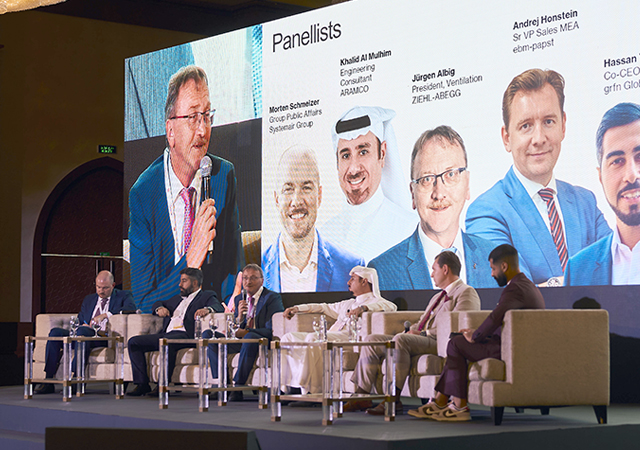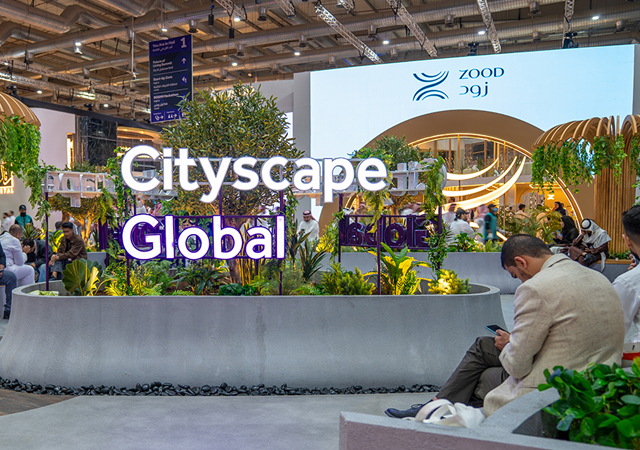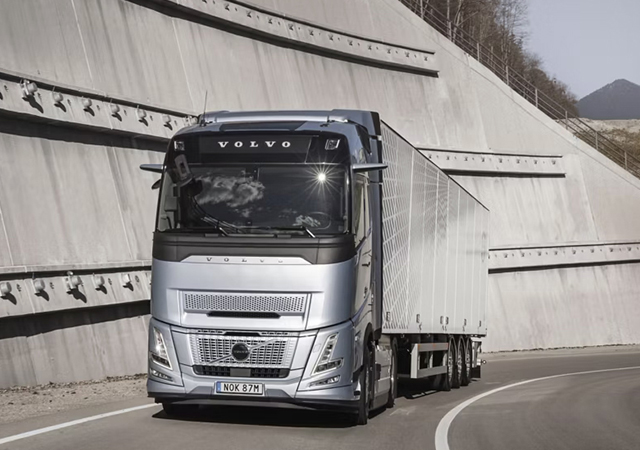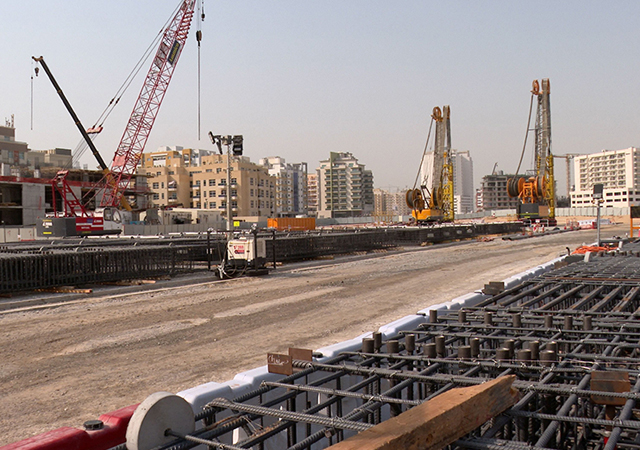

The long-awaited project to develop a new terminal complex at King Abdulaziz International Airport (KAIA) has finally got under way with the ground having just been broken at the 105 sq km site just north of Jeddah.
Al Mabani Contracting of Saudi Arabia has now started the mass earthworks and rough grading contract for the apron, terminal building and landside facilities at the complex, which involves a total of 2 million cu m of cut-and-fill works.
The multi-billion-dollar project for General Authority for Civil Aviation (GACA) has been designed by Aeroports de Paris International (ADPi) of France and is being built as part of a major programme to transform the existing airport facility to cope with the rapidly rising number of passengers, particularly during the Hajj and Umrah pilgrimage seasons.
To address the congestion and operational problems at the airport, the GACA initiated a masterplan in 2005 which was developed by Naco (Netherlands Airports Consultants).
The 30-year masterplan proposed the construction of a state-of-the-art terminal complex – essentially a new airport – which will be carried out over a number of phases.
The existing airport comprises two main commercial terminals: the South Terminal for Saudi Airlines and the North Terminal for foreign carriers. In addition, it includes the Hajj Terminal, Royal Terminal and General Aviation Terminal.
The current north and south terminals at the airport were designed to handle 7 million passengers per annum (mppa) but with the increase in Umrah traffic, actual throughput is about 16 mppa.
The recent expansion and refurbishment works on the terminals is a short-term solution. These works have included the North Terminal and South Terminal upgrading/expansion, creating more space landside and airside, installation of new equipment and improved facilities; and utilities load centres renewal.
The upgrade has also entailed the expansion of the Hajj Terminal, which is now near nearing completion, and the construction of a new desalination plant on a build-operate-transfer (BOT) basis; construction of an area control centre and airfield facilities upgrade, including extending, reconstructing runways and taxiways.
The existing three runways, which are to be retained, are currently being upgraded and refurbished to take Code F aircraft, specifically the A380. The works also include 27 km of new taxiways – again, all Code F.
The development includes full support services, power distribution, roads, tunnels, related infrastructure that involves a total of about 1 billion cu m of concrete works.
Phase One
Phase One of the new passenger terminal complex, which is currently under way, is targeted for completion by early 2013. The terminal complex comprises two crescent-shaped terminal buildings with a capacity of 30 mppa, featuring 46 departure gates with 76 passenger boarding bridges. Most gates have two bridges although some have three for A380, making bussing of passengers to the aircraft a thing of the past.
The floor area of the terminal at 600,000 sq m, exceeds by 50 per cent that of Heathrow’s new T5 Terminal at 400,000 sq m yet handles a similar capacity.
Long-term plans for the terminal include a rapid transit rail system bringing passengers in from central Jeddah. It will run into a terminal that will be one of three double-crescent shaped buildings linked by an automated people mover and a sophisticated baggage handling system with estimated 60 km of conveyors.
Rail links to Makkah and Madinah have been planned for Phase One and for the first time in Saudi Arabia arriving passengers will be able to transfer from plane to train.
Following the award of the mass earthworks contract, a number of packages are expected to be awarded for Phase One works. These include baggage handling systems (CP 06), aprons, taxiways and airside roads (CP 07), load centres (CP 08), landside roads (CP 09) support facilities and miscellaneous buildings (CP 10 and 19), deep foundations and railway station (CP 11A), terminal and car-park structure (CP 11B), terminal envelope, finishes and MEP (CP 12), conveying systems (CP 13), control tower and surveillance (CP 15), passenger boarding bridges (CP 16), landscaping on the landside (CP 17) and hard landscaping (CP 18).
Tenders for the foundations of the terminal are expected this month while those for the construction of the terminal building are expected by the year-end.
Central to the airport is the air traffic control tower destined to be one of the world’s tallest at 130 m – the world’s tallest freestanding control tower being the 132.2 m Suvarnabhumi Airport control tower 25 km east of Bangkok, Thailand (The world’s highest-placed control tower is Vancouver Harbour Control Tower on top of the 142 m skyscraper, in Vancouver, Canada).
The construction management services contract for the first phase of the project was award to Dar Al Handasah (Al Shair and Company). The five-year contract covers preliminary planning of all project components of Phase One; preparation of the design, scope of work, evaluation of proposals and management of design services; review and approval of design up to the executive drawings plan; preparation of project management and supervision procedures; preparation of plans to ensure that the airport’s operations remain uninterrupted during the construction phase; and preparation and supervision of the commissioning phase of airport until commercial operations are launched.
KAIA is expected to have more style and a higher level of services, as befits a gateway to the kingdom and the two holy cities. The complex has been designed so that it can extend in a further two phases to its ultimate capacity of 75 to 80 mppa by 2035.
The combined capacity of the Hajj Terminal and the new KAIA project gives Saudi Arabia an enormous handling capacity for air traffic and look set to change the face of air travel in the region in the years to come.
The masterplan for the project included the vision that the financing, construction and operation of the French-designed terminals would reshape the Saudi aviation industry. Incorporating as it does many private-sector partnerships, it aims at being entirely self-financing.
Airport City
Among other plans for the area, GACA is seeking two master-developers to oversee plans for its ‘Airport City’, which is expected to be a major economic driver. The city – which will be developed over some 5 sq km of land surrounding the airport complex – is expected to comprise a free zone, industrial zones, a logistics village, residential areas and hotels.
Hajj Terminal
Meanwhile, work on the extension and redevelopment of the iconic tented Hajj Terminal is now in the finishing stages.
The extension – project managed by Ports, Projects Management and Development Company (PPMDC) – is located under the northern half of the split terminal. It centres on the main arrivals/departures hall, a minimally pillared open-plan rectangular hall faced in grey granite.
The Hajj Terminal was built when the airport was first opened in 1981. The redevelopment project for the 465,000 sq m terminal – which features a distinctive white PTFE-coated fibreglass membrane roof – aims to increase its capacity to handle 3,500 departing Hajj passengers per hour and 3,800 arrivals per hour by 2024.
The redevelopment will feature a plaza area including prayer halls, retail, bank, food courts, a terminal building including all airport services, processing phases and lounges, and 10 contact gates, with additional remote gates.
The terminal caters for two types of movements: as a one-way terminal during the Hajj period where the load of a full aircraft is channelled one way either arrival or departure; and as normal passenger terminal off the Hajj period, corresponding to the Umrah period. Located above and overlooking the main hall, a sophisticated and computer-rich terminal control centre monitors traffic flow both inside the building and in the tented concourse areas immediately adjacent. Currently easily capable of handling seasonal Umrah traffic, the new facility will be out to the test for the first time during this year’s Hajj.

















.jpg)













 (1).jpg)




























































.jpg)












